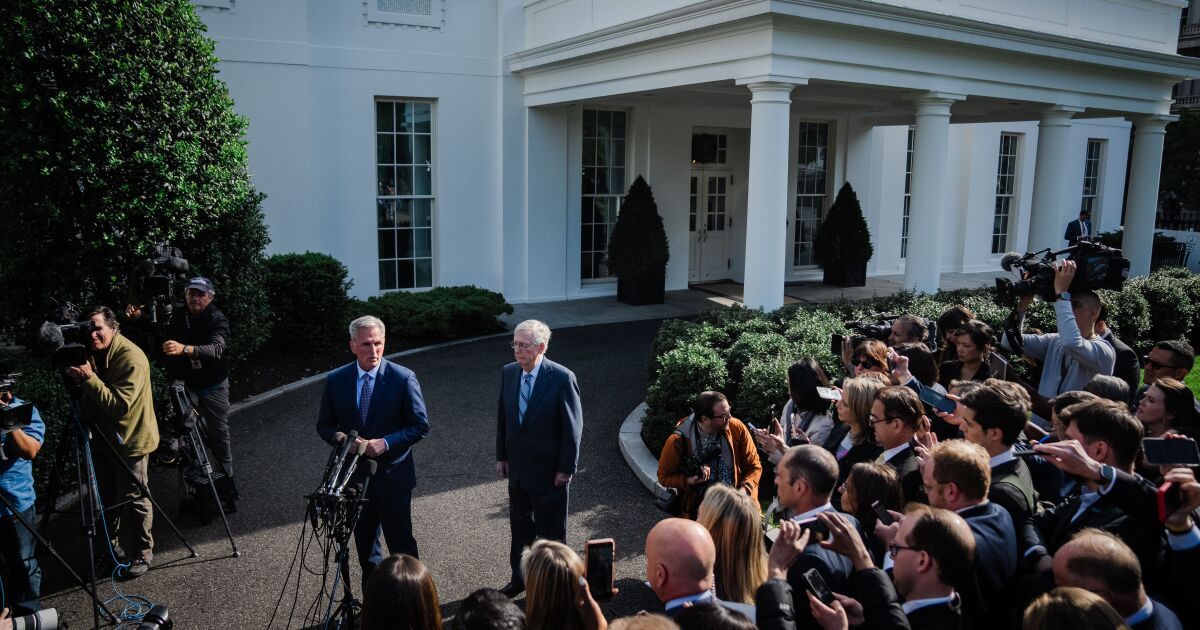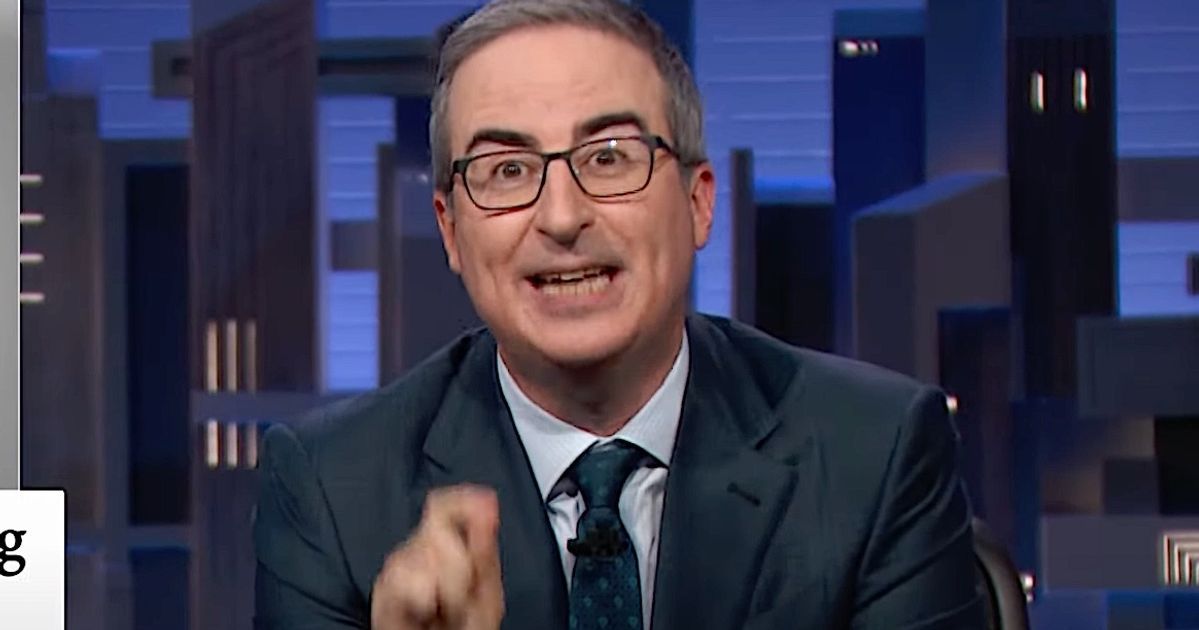This time, the debt ceiling crisis really could end in disaster
The last time the U.S. government went to the brink of defaulting on its debt — in 2011 — the stock market tumbled and there was something close to a panic across the economy before Washington came to its senses and cut a deal.
Much the same scenario is unfolding now, with potentially even more dire consequences, and there are major differences between then and now that make a bad outcome far more likely.
One difference is that the political climate is more vexed. Not only is there greater polarization and intransigence in Congress, but the paper-thin Republican margin, the personalities of key players, and the outside pressures on both parties make compromise harder to reach.
Advertisement
Adding to the hazard, both the government’s fiscal condition and the American economy as a whole are more fragile than the last time such a crisis developed. In 2011, the country was coming out of a recession. This time it appears to be going into one.
“It’s a much dicier economic setting for this to happen,” said Douglas Holtz-Eakin, president of the American Action Forum, a conservative policy and advocacy group in Washington.
And it doesn’t have to come to a full-fledged default for the government and millions of middle-class Americans to suffer serious long-term damage: If foreign governments and financial markets begin to have even the slightest doubt that the U.S. government will pay its bills, they will begin to hedge their bets in ways that push up interest rates and the federal deficit even higher, ultimately costing the American economy and its consumers in the form of higher prices for goods.
That kind of inflation takes decades, not months or years, to bring down.
In the global economy, in which the United States imports much more than it sells abroad, the dollar is known as the world’s reserve currency. That means it’s the currency that all other countries trust to remain rock solid. Being the reserve currency carries huge benefits for the United States. Perhaps most important, it means the U.S. Treasury pays low interest rates when it borrows money to cover deficit spending.
That’s why economists and other experts warn that a default would be catastrophic.
So far, a default has been unthinkable and reason enough to expect a rerun of prior debt-ceiling battles. In 2011 — to date the closest the nation came to defaulting — stocks plunged nearly 20% as the crisis deepened. Thus far, aside from rattling short-term bond markets, investors in U.S. equities have been eerily calm.
“At the moment everyone is just frozen in place. I think we have another week” before stocks turn more volatile, said Chris Rupkey, chief economist at FwdBonds, a financial markets research firm in New York.
President Biden and House Speaker Kevin McCarthy (R-Bakersfield) met on Tuesday and planned to meet again, giving people at least a modicum of hope that a deal may still be possible. But neither side has budged from its starting position. The Republican-majority House, on party lines, passed legislation last month that amounts to a nearly 14% cut in federal spending, adding stringent requirements on social programs and unraveling some of Biden’s climate measures.
Biden has insisted that Congress needs to just raise or waive the debt limit, authorizing spending that was already approved by lawmakers. Treasury Secretary Janet L. Yellen has said the government could run out of money as early as June 1.
How the two parties came to this point looks remarkably similar to 2011. As then, a Democratic president is in the White House contending with a House that Republicans had won control of in the midterm elections. And back then as now, Congress had just approved major increases in federal spending — in response to the Great Recession of 2009 and more recently, the COVID-19 pandemic.
Beneath the surface, there are significant differences in the makeup of the GOP-led House. In the 2010 midterm election, more than 60 Republicans captured House seats in districts that President Obama had won two years earlier, said Sarah Binder, an expert on Congress at the Brookings Institution.
But last year, just 18 such Republican victories were in swing districts, and most of the new GOP House members were more ideologically conservative — or more fearful of right-wing primary challenges — than those who joined the House in 2011.
What that means, she said, is that there are considerably more Republicans who are likely to be less willing to compromise.
“There was a larger cohort more cautious of going to war with Obama,” Binder said, referring to a showdown over raising the debt ceiling. “The intensity of the partisanship this year is quite stunning.”
In the 2011 debt-limit battle, some 60 Republicans in the House were part of the tea party movement that pressed for lower taxes and a cut in federal spending as their price for approving a higher debt limit. Today the pressure is coming from a similar number of Republican members, from the Freedom Caucus who make up the most conservative and extreme elements of the GOP.
Led by Republican firebrands including Jim Jordan of Ohio, Andy Biggs of Arizona and Marjorie Taylor Greene of Georgia, the Freedom Caucus nearly torpedoed McCarthy’s bid to be speaker and has wielded significant influence in partisan politics.
“There’s sort of a destructive component to the conservatives in Congress today,” said William Gale, a senior fellow at Brookings and expert on federal economic policy.
And McCarthy has less room for error, with only a narrow Republican margin in the House. He can only afford to lose four from his party, whereas then-Speaker John Boehner had a 24-member cushion.
Holtz-Eakin says that the obstacle in resolving the crisis is coming from the White House side. Obama, he argues, was more willing to bend after taking what he called a “shellacking” in the midterm elections. Biden’s party lost nine House seats in the 2022 midterms versus 63 in 2010. It’s the White House, he said, that should be getting the two party leaders to negotiate and forge a deal.
So far, analysts say, there isn’t a sense of urgency — and probably won’t be until investors and others push the two sides to the table for serious talks.
“I’m of the mind that a selloff in the stock market is necessary to resolve this,” said Mark Zandi, chief economist at Moody’s Analytics. “We need a lot of red on the screen to have constituents and donors and business leaders pound on the door of lawmakers and say, ‘Let’s get over this.’”
The reason they haven’t yet may be that markets and others have seen the political drama over the debt limit multiple times in the past with always pretty much the same ending.
Even in the event the debt ceiling is breached, Zandi and other analysts don’t think it’ll do long-term damage so long it’s just for a day or two.
“Even if, God forbid, Treasury misses a payment, you can bet your bottom dollar that Congress will quickly pay its bills,” Rupkey said.
Still, in 2011, the debt fight was so protracted that it prompted Standard & Poor’s to downgrade U.S. debt for the first time, from its top AAA rating, on the basis of governance. And the events of 2011 ultimately led to an increase in interest rates.
Brookings’ Gale says there are only three options: get a deal on spending and increase the debt ceiling; get a clean debt limit increase or suspension; or, what he called “something crazy happens,” like the Treasury trying to get out of the quandary by minting a trillion-dollar coin or invoking the 14th Amendment to raise the debt limit.
Whatever it is, one thing is almost for sure: It’ll get decided in the 11th hour.
Source: Los Angeles Times


